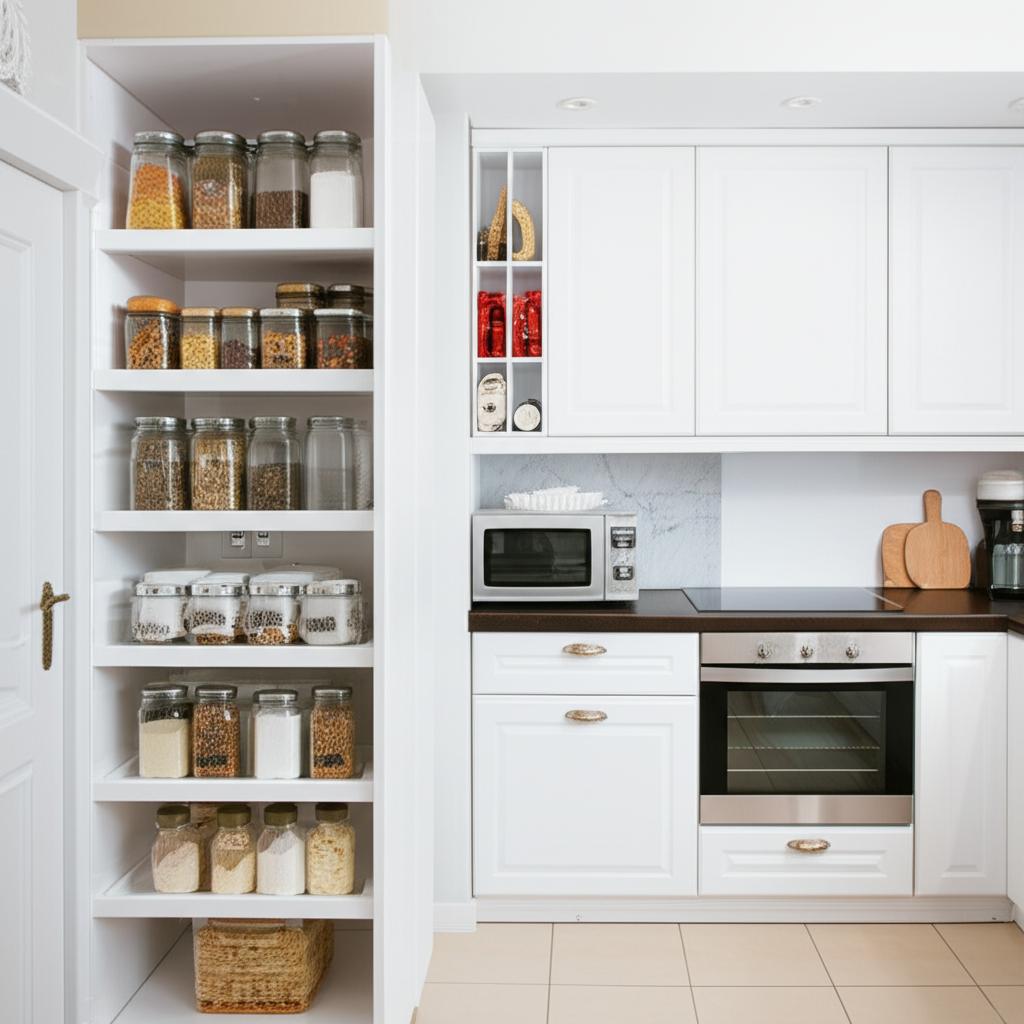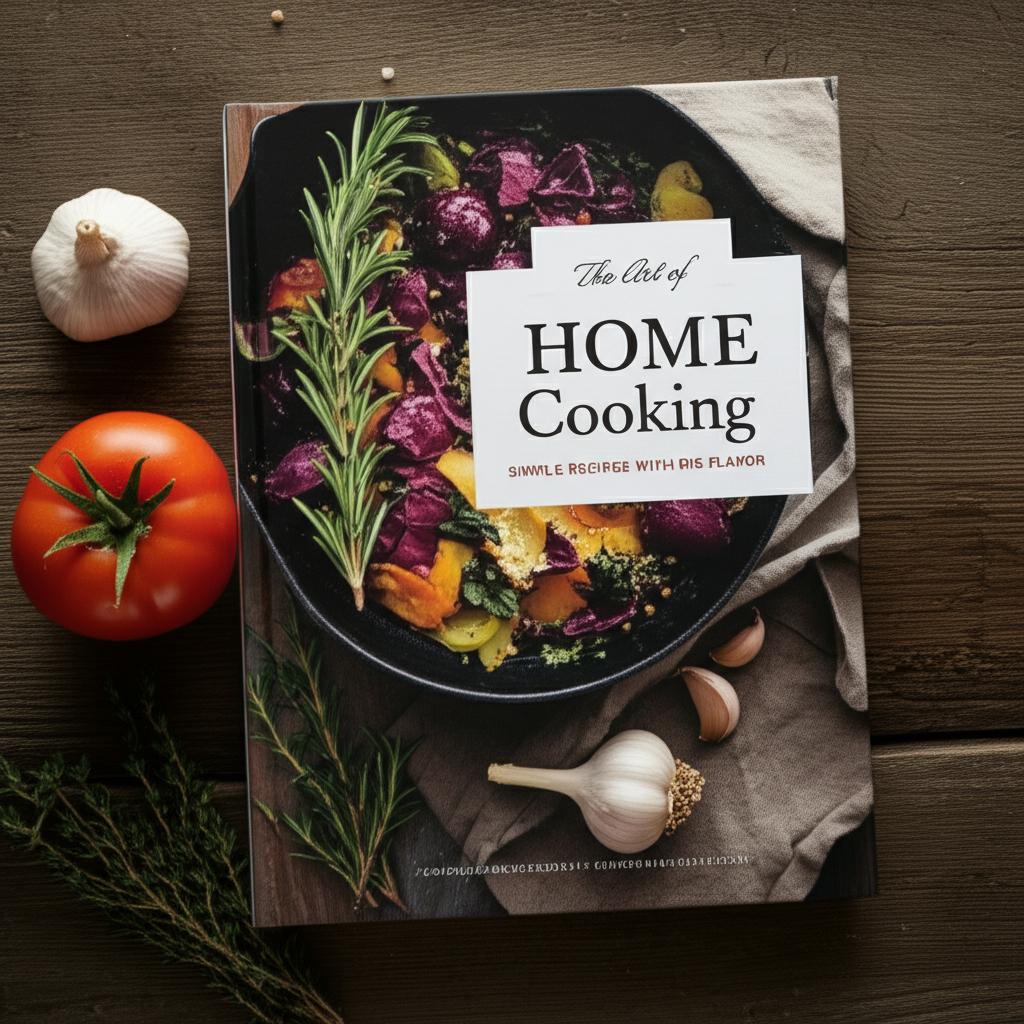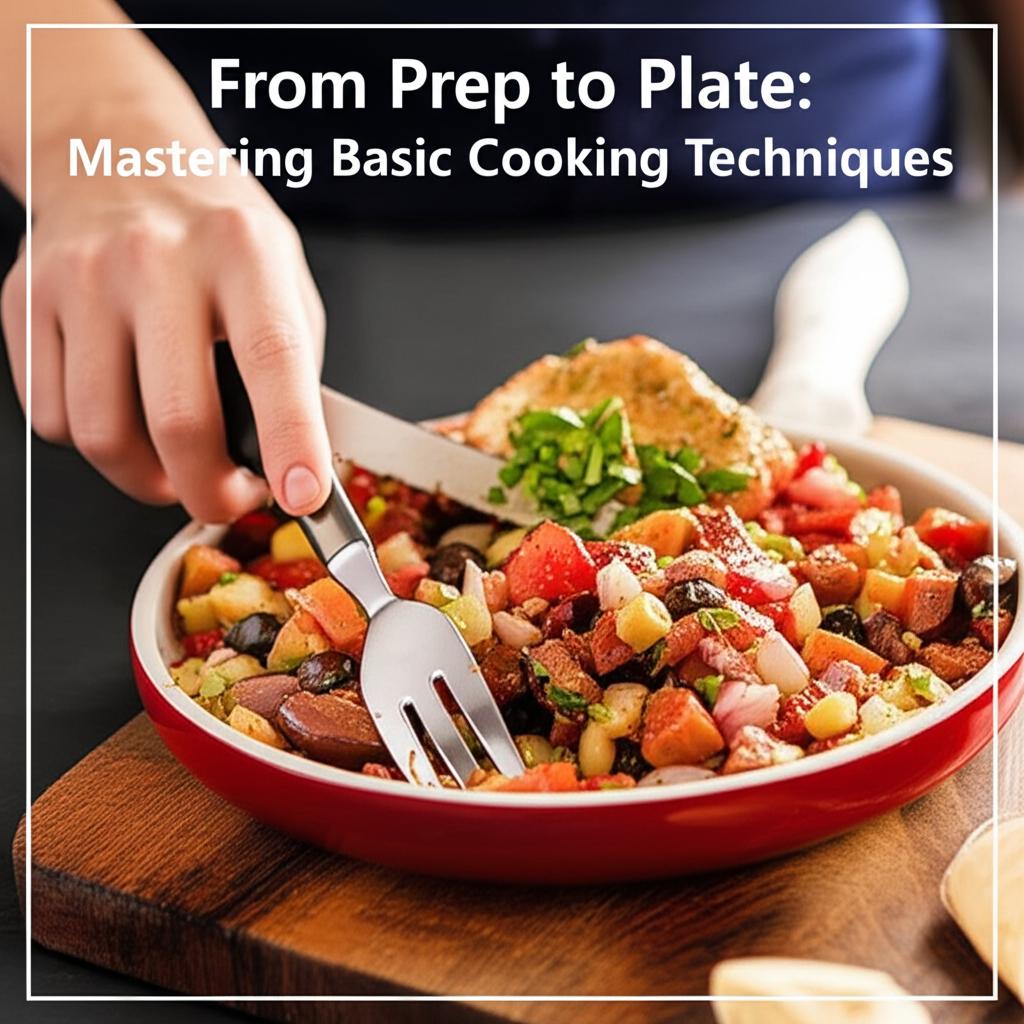
Unlock Your Kitchen’s Potential: How to Organize a Small Kitchen Efficiently
Small kitchens are often described as cozy, charming, or intimate. While true, they can also quickly become a source of frustration if not organized efficiently. Every inch counts, and without a smart system, cluttered countertops, overflowing drawers, and hard-to-reach items can turn cooking into a chore rather than a joy.
But don’t despair! With a strategic approach, your small kitchen can transform into a highly functional, beautiful, and stress-free space. This detailed guide will walk you through step-by-step how to organize a small kitchen efficiently, share invaluable tips, and highlight common mistakes to avoid.
The Journey to an Organized Small Kitchen: Step-by-Step
Organization isn’t just about tidiness; it’s about creating a system that works for you and your space. Let’s dive in!
Step 1: The Grand Purge – Declutter Relentlessly
This is arguably the most crucial step. You can’t organize clutter, you can only move it around. Start with a blank slate.
- Empty Everything: Take every single item out of your cabinets, drawers, pantry, and off your countertops. Yes, everything! Place it on your dining table, a cleared counter, or even the floor.
- Sort into Categories: As you empty, create piles:
- Keep: Items you use regularly and love.
- Donate/Sell: Items in good condition that you no longer use or need.
- Discard/Recycle: Broken items, expired food, things beyond repair or use.
- Be Ruthless: Ask yourself:
- “Have I used this in the last year?” (If not, seriously consider letting it go, especially for specialized gadgets).
- “Do I really need three spatulas/two potato peelers?” Keep the best one or two.
- “Is this expired, broken, or truly unused?” Get rid of it.
- Focus on Duplicates: Many small kitchens are filled with duplicate items. Do you need two sets of measuring cups? Five mismatched mugs? Pare down to what you genuinely use.
Step 2: Zone It Out – Group Like Items Together
Once you’ve decluttered, it’s time to put things back with a purpose. Create dedicated zones for different activities and categories. This makes finding items intuitive and keeps your workflow smooth.
- Cooking Zone: Pots, pans, cooking utensils (spatulas, ladles), cutting boards, oils, spices. Ideally near your stove and prep area.
- Baking Zone: Mixing bowls, baking sheets, measuring cups, flour, sugar, baking extracts.
- Dishware Zone: Plates, bowls, glasses, mugs, cutlery. Best located near the dishwasher or sink for easy loading and unloading.
- Pantry/Food Storage Zone: Dry goods, canned goods, snacks, food storage containers.
- Cleaning Zone: Dish soap, sponges, cleaning sprays. Usually under the sink.
- Beverage Zone: Coffee maker, tea, mugs, filters.
Step 3: Maximize Vertical Space – Think UP!
In a small kitchen, floor space and counter space are premium. Vertical storage is your best friend.
- Utilize Walls:
- Open Shelving: If appropriate for your style, open shelves can hold frequently used items, reducing cabinet clutter.
- Wall-Mounted Racks: For pots, pans, or even often-used utensils.
- Magnetic Strips: Perfect for knives or often-used metal tools, keeping them off the counter.
- Stackable Solutions:
- Tiered Shelves or Risers: Double the storage in cabinets for plates, bowls, or spices.
- Stackable Containers: For dry goods in the pantry.
- Over-the-Door Solutions:
- Cabinet Door Organizers: For cutting boards, cleaning supplies, or spices.
- Pantry Door Organizers: Ideal for small packets, spices, or condiments.
Step 4: Conquer Drawers and Cabinets – Every Item Has a Home
Now that you’ve decluttered and zoned, it’s time to organize the inside of your storage spaces. Every item should have a home.
- Drawer Dividers: Essential for cutlery, cooking utensils, and even small gadgets. This prevents items from sliding around and keeps them neatly separated.
- Cabinet Organizers:
- Pull-out shelves/baskets: Make reaching items at the back of deep cabinets much easier.
- Pot and Pan Organizers: Keep lids and pans separated and easily accessible, preventing noisy avalanches.
- Under-Sink Solutions: Use a caddy or a two-tier organizer to manage cleaning supplies around plumbing.
- Decant Wisely: For pantry items like pasta, rice, flour, and sugar, consider storing them in clear, airtight containers. This looks cohesive, keeps food fresh, and allows you to see inventory at a glance. It also makes stacking easier.
- Utilize “Dead” Space: That narrow space next to your fridge? Could it house a slim rolling cart for oils or canned goods?
Step 5: Tame the Countertops – Less is More
Your countertops are prime real estate in a small kitchen. The goal is to keep them as clear as possible for prep work.
- Only Essential, Frequently Used Items: Keep only items you use daily out, such as your coffee maker, toaster, or a knife block.
- Vertical Storage on Counters: If you must keep items out, use vertical solutions like a compact knife block, a tiered fruit basket, or a utensil crock.
- Put Away After Use: Make it a habit to clean as you cook and put away items immediately after use. A clear counter instantly makes a small kitchen feel larger and more serene.
Step 6: Maintain & Adapt – It’s an Ongoing Process
Organization isn’t a one-time event; it’s an ongoing lifestyle.
- Regular Upkeep: Dedicate 5-10 minutes each day to tidying up. A quick wipe-down, putting things back in their designated spots, and decluttering mail or papers can prevent overwhelm.
- Monthly “Micro-Purge”: Once a month, quickly scan your pantry and fridge for expired items or things you haven’t used.
- Adapt as Your Needs Change: Your kitchen needs might evolve. If you acquire new gadgets or change your cooking habits, be prepared to adjust your system.
Pro Tips for Small Kitchen Success
- Think Vertically: We can’t stress this enough. Look for opportunities to utilize wall space, cabinet interiors, and the height within shelves.
- Utilize Cabinet Doors: The inside of cabinet doors offers prime real estate for hooks, spice racks, or even small clipboards for recipes.
- Decant Wisely: For pantry items, using uniform, clear containers makes your pantry look tidy, helps you see what you have, and often allows for more efficient stacking.
- Contain Chaos: Use bins, baskets, and trays within drawers and cabinets to group similar items. This prevents them from becoming a jumbled mess.
- Label Everything: Especially if you’re using opaque containers or have multiple similar-looking spices. Labels save time and frustration.
- Store Less-Used Items Elsewhere: If you have special occasion platters, large serving dishes, or seldom-used appliances (like a stand mixer you only use twice a year), consider storing them in another part of your home (e.g., a hall closet, garage, or even under a bed) if kitchen space is truly limited.
Common Mistakes to Avoid
- Skipping the Purge: Trying to organize a cluttered space is like trying to organize a junk drawer by just pushing things around. You need to remove what doesn’t belong first.
- Buying Storage Solutions First: Resist the urge to buy all sorts of bins and organizers before you declutter and measure your space. You’ll end up with things that don’t fit or aren’t needed. Declutter first, then assess what storage solutions you actually need.
- Ignoring Vertical Space: This is the most common oversight in small kitchens. Not utilizing walls, cabinet heights, and even the space above your fridge leaves valuable storage untapped.
- Overstuffing: Just because you have a container doesn’t mean you should fill it to the brim. Overstuffing leads to items falling out, difficulty finding things, and a general feeling of disarray.
- Lack of Zones: Throwing items into the nearest empty spot creates chaos. Sticking to defined zones is key for long-term organization.
- Forgetting Maintenance: Organization isn’t a one-time project. Without a commitment to regular tidying and occasional decluttering, your small kitchen will quickly revert to its cluttered state.
Embrace Your Efficient Small Kitchen
Organizing a small kitchen efficiently is a journey, not a destination. It requires an initial effort, but the payoff is immense: less stress, more joy, and a truly functional, beautiful, and stress-free heart of your home. By following these steps and incorporating smart habits, you’ll transform your cozy kitchen into a culinary haven where every item has its place and every task feels effortless. Happy organizing!
FAQ
Q. How do I start organizing my small kitchen if it’s currently overwhelming?
A. Begin by decluttering ruthlessly. Remove anything expired, unused for over a year, or duplicate items. Take everything out of your cabinets and drawers, clean them thoroughly, and then only put back what you truly use and love. This “empty and reset” method helps you see the true volume of your items and available space.
Q. What are the best ways to maximize vertical space in a small kitchen?
A. Utilize vertical space by installing floating shelves, using stackable containers for dry goods, adding risers inside cabinets to create extra levels, and employing magnetic knife strips or wall-mounted spice racks. Over-the-door organizers can also add valuable storage for smaller items like cutting boards or cleaning supplies.
Q. My counter space is extremely limited. How can I keep it functional and clutter-free?
A. Prioritize what stays on your counters. Keep only daily essentials like your coffee maker, toaster, or a small fruit bowl. Store less frequently used appliances in cabinets or a pantry. Use wall-mounted solutions for paper towels or frequently used utensils to free up surface area. Consider a mobile kitchen cart for extra prep or storage space that can be moved aside when not needed.
Q. How can I organize my pantry or food items when I have very little dedicated space?
A. Group similar items together (e.g., all baking supplies, all snacks). Use clear, airtight containers for dry goods to maximize space and keep food fresh while allowing you to see contents at a glance. Employ drawer dividers for packets, small bags, and loose items. Consider using back-of-door organizers for spices, wraps, or foil if you have a pantry or cabinet door.
Q. What are some smart storage solutions for pots, pans, and lids in a small kitchen?
A. Implement pot and pan organizers or dividers that allow vertical stacking or pull-out shelves to make items easily accessible. Use lid racks, either inside cabinet doors or freestanding, to keep lids organized and prevent them from cluttering up your pots. Nested cookware sets are also excellent space-savers as they stack compactly.
Q. Are there any specific products or tools that are highly recommended for small kitchen organization?
A. Yes, consider cabinet shelf risers to create multiple levels, drawer dividers for utensils and gadgets, lazy Susans (turntables) for corner cabinets or oils, clear airtight containers for pantry items, magnetic knife strips, and over-the-cabinet-door organizers. Wall-mounted spice racks and utility carts can also be very useful for adding storage or movable workspace.
Q. How can I make the most of awkward or deep cabinets that are hard to reach?
A. For deep cabinets, use pull-out shelves, bins, or baskets to store items, making them easier to retrieve without having to dig. For awkward corner cabinets, lazy Susans or pie-shaped corner organizers are invaluable for making contents accessible. Always store less frequently used items at the back of these spaces.



